One of the key elements in rock mix is thick and heavy guitar sound. One of the effective ways to accomplish this sound in the mixing process is through a technique called as “Double Tracking”. In this post I will illustrate how to double track guitars in the mix with the objective of making it heavy and thick. Also in the last section of this article, you will also know the general guidelines on mixing guitar tracks in your home studio that utilizes different techniques depending on how the guitar is recorded.
Recording the guitar properly for Double Tracking

Photo credits:
http://www.penmachine.com/musicpages/cheapguitar2005.html
The simplest method is recording the guitar performance with two microphones aimed at the guitar amplifier cabinet. In this type of setup, you will automatically get “double tracked” guitars which makes easier for you to mix later. See signal flow diagram below:
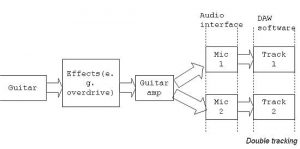
Also with this type of recording technique, you do not need to record the guitar twice. Record with the best distortion tone you need. Do not record it yet if you are not yet convinced of the distortion tone; much better to experiment with a live band before starting to record the guitar. The overall purpose is to have a clean and final recording ready for mixing. Remember it is not advisable to fix the distortion tone in the mix; it makes the mixing process to be complicated.
c.) If you only have one microphone, you can still follow the above steps except that you will only be creating one track in your DAW. It will be double tracked in the mix (to be illustrated later) by manual duplication of tracks.
d.) If you do not have a microphone, you can implement this technique on recording the clean guitar using DI method(direct to your audio interface) as one track. It will be duplicated in the mix later.
2.) Double check the tuning of the guitars. Very easy to do but often overlooked.
The proper “double tracking” mixing steps
If you are only recording one guitar track (using one microphone or DI), start with Step1 until the end. If you are recording guitars using two microphones (thus you have two recorded tracks in your DAW) start with Step3.
Step1.) Start with placing the 1st track in Track1 of the mixing session. This is the original guitar recording.
Step2.) Create Track2 of in your DAW mixing session. Simply copy and paste the wav file in Track1 to Track2.
Step3.) Pan the Track1 to -75 units (left). Depending on your DAW/mixing software, this could be in %, for example if the maximum left pan setting is 100% so it will be 75/100 or 75%.
Step4.) Pan the Track2 to 75 units (right)
You can read this detailed article on panning guitars in mix.
Step5.) Now to get that wide thick sound, you can apply 5ms delay to one of the guitar (either left or right) (mix 100%). This delay may not be necessary if you are recording guitars using two microphones because there is a natural delay captured between these microphones. However feel free to experiment with the sound.
Step6.) To even make it heavier, do not anymore apply reverb on any of the tracks (it is highly important that the reverb is from the room and amp based reverb that will be realized during the recording process). It is because if you start applying reverb on the guitar, it will tend to sound weak and far. Since you are mixing for rock, it is important to get the “in your face” guitar sound.
USEFUL REFERENCE: If you are looking for more information relating to Step1 to Step6, you can read the following tutorials:
Adding ambiance sound to your guitar recording
Properly adding reverb to your guitar
Step7.) EQ it properly, do not cut too much bass in the distorted guitar, it will help add the heaviness sound. As an example:
a.) Cut 1000Hz and 800 Hz at Q=1.4(start with -3dB then gradually increase until you get the desired sound) on any guitar to make sound so clean and avoid the cracking sound. For more EQ tips, you can read the next section of this tutorial.
b.) Cut 3000Hz with around -6dB and Q of 1.0 for both guitar tracks. This will improve the vocal clarity in the mix. Optionally for heavy rock and alternative music, you can start with -3dB to still get that strong mid-range guitar overdrive tone.
Step8.) Adjust track1 and track2 volume and stop when it is loud enough for the guitar tracks to be heard, not dominating the vocals. It is highly important to rely on your ears to decide whether the settings are working or not.
DEMO: Listen to a sample mix below applying the principles above:

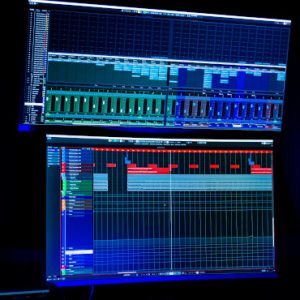
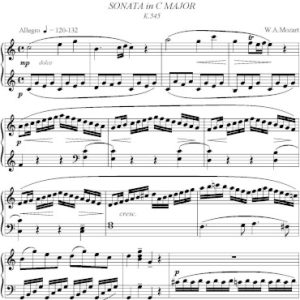
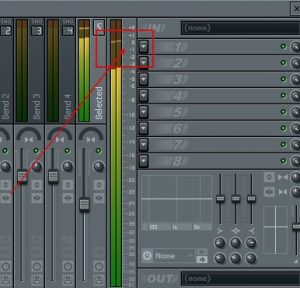

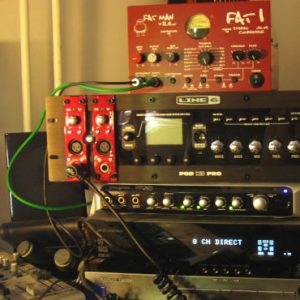


12 Responses
Very useful for beginners.. Thanks a lot for the tips.
Hi Chris,
Having two guitarist is a lot easier to manage. I would do the following:
1.) Record them together but panned the first guitarist to the left (-75 for example) and the second guitarist to the right(+75).
Todays multi-channel audio interface and DAW allow you to record two or more tracks together.
2.) YOu do not need to apply delays that would artificially create the guitar ambiance. It is because recording them together naturally creates the delays. Also take note that by recording together, you are automatically creating double tracks of the guitar (one track from each guitarists).
3.) Yes compression can make the guitar sound strong and thick. If you do not know why. Consider an example of a rhythm guitar recording where the guitarist failed to make a consistent volume or dynamics throughout the song.
So that results to some parts of the song having weak rhythm guitar parts. Since compression can bring weak levels up and very strong levels down, it will stabilize the dynamics of the guitar. So as a result, those weak rhythm guitar parts would now become more audible in the mix. Finally the guitar sound thick, more clear and defined.
Hope you got a great guitar sound in your mix by following those tips. Good luck!
Hi Emerson,
1. What would you suggest if there is two guitars/guitarists in the song. At times they’re playing the same part & at other times splitting off into separate parts. Would you use the same technique as above for each guitar, but keep the double for each panned to the same side as the original, or would you suggest something different?
2. Also apart from compression at the beginning of the blog you mention maximizing. Can you explain this technique more please.
Thanks a lot
Chris
Wow, what you have explained here just happened to be the problem I was having with my music, and I didn’t know what it was, and here it is! So much simpler than I thought it would be! One thing i have found though, when double tracking, i just record the one track, double it and pan the same thing 100% left and right. This makes not too much difference, so i follow your step of delaying a track 5ms. This makes my guitar sound much thicker in the mix, but i get quite a bit of concentration on that side. So say i 5ms delay the left pan, i can…feel or notice the guitar more on my right ear than my left ear. I tried fixing this by lowering the delay to 3ms, but it was still happening, so i lowered the volume on my right ear, and this has slightly fixed the problem. Do you know any more conventional ways to remove this imbalance apart from lowering delay and/or adjusting the volume of one side? I think you only notice this imbalance (even after shortening delay and adjusting volume) if your really focusing, so its not a major issue, but im just curious. Still a very very usefull post lots of thanks!
Hi Ben,
Do not forget that you are not only mixing a guitar but vocals and other instruments as well. I agree that the guitar sound thin and fizzy but its because I cut it to pave way to the heaviness played by the bass guitar. And the guitar dominance in the mid-range has been compensated by the vocals which is an important priority. You made a good point in getting a good tone before hitting the record button. But take note again that the primary objective of the guitar tracks in this song is to simply make the guitar sound good and play the melody lines. It should not dominate the entire mix. Your suggestion will work in a very heavy rock mix (such as in metal and heavy alternative) and other guitar-solo/instrumental driven projects. Thanks for the feedback.
The singing is quite nice but the guitars sound thin and fizzy.
If you have a good tone before pushing that record button then the guitar will mix itself. All of these (ten) steps are just over-processing what should already be a huge sound.
Forget cutting frequencies and start playing with the tone control on your guitar- it makes a huge difference and you’ll notice when you put your ear at the same level as your microphone is to your speaker.
Play with the mic’s distance and use a mic pre-amp.
Use only the pedals you must (amp overdrive is always superior) and if you want a really huge sound, pre-delay your reverb (works best with spring or plate).
Great post. Thanks for sharing this great tips.
Hi Bizzy Guy,
I agree with you with adding extra guitars. Not only Iron Maiden does this, but I heard that Billy Corgan (Smashing pumpkins) do this a lot of times during the production of Siamese Dream album.This makes the guitar sounds really heavy in addition to some tube screaming effects.
If your in a band or something too you can get 2-3 extra guitars in there playing the same thing, iron maiden does it and they sound great. But I really like this blog it goes into a lot of good detail how to thicken your sound great job! 😀
amazing stuff thanx
Thanks for visiting man!
hello… hapi blogging… have a nice day! just visiting here….